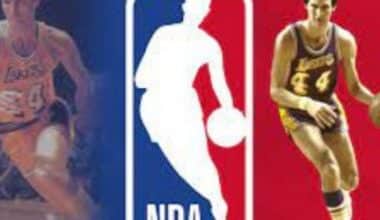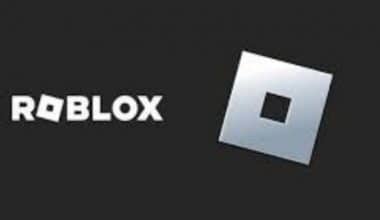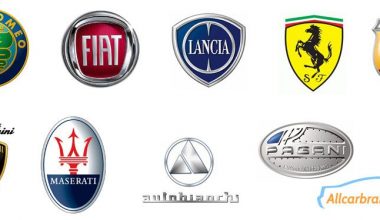Pixar has used three distinct logos during the course of its existence, and they’re all distinct from one another. The company, originally founded in 1979 as Graphics Group, changed its name and logo to its current form, a pure geometric form with a laconic color palette, in the 1980s. Modern animation studios often use simple, classy logos to draw attention away from themselves and toward the animated movies they make. Here is more information about the Pixar logo, including its history, movies, jobs, and characters.
Pixar Logo
The American firm Pixar specializes in computer-generated animation. Pixar was established in Emeryville in 1979 and is known as a prominent animation studio. It’s situated in Emeryville, California, and first made an appearance in 1986. Everything having to do with computer animation falls under its purview. She performs this role as an affiliate of The Walt Disney Company.
Pixar Logo Font
The Charlemagne Std-Bold font served as inspiration for the Pixar logo. The arching form of the base serifs is one of its defining characteristics. Between 1989 and 2002, Carol Twombly worked on this font, which was released by Adobe. The elegant English versal capitals from the 10th century served as a model for the Charlemagne typeface family.
Pixar Logo Font: Product Logo
The corporation started using a wordmark in 1995, with Luxo Jr. standing in for the letter “I” because he looked like one. Pete Docter created the Pixar logo in-house, and it debuted at the conclusion of Toy Story.
Pixar Logo Font: Alternate Forms of the Logo
There are several different logos available, including 3D and anniversary (20th and 25th) variants.
Pixar Logo Font: Color
The backdrop is a pale blue tint, the font is black, and the lamp is a muted gray.
What is the Pixar Logo?
The Pixar production logo, which includes a comical desk light, is a sequence that starts and ends most Pixar production films. The little, jumping desk lamp that appears in Pixar’s emblem is taken from the 1986 short film Luxo Jr.
Why is Pixar Logo a Lamp?
On Lasseter’s desk at the time, a Luxo L-1 lamp was being used as a model for a computer depiction. As a result, he made the decision to transform the Luxo into an animated, lifelike figure, adding Luxo Jr., and creating a short story about a father lamp and a child lamp pushing a ball back and forth.
What Pixar’s Mascot Is?
The main mascot of Pixar Animation Studios is Luxo Jr., a semi-anthropomorphic toy desk lamp. He appears on the production logo of every Pixar movie, hopping into view and flattening the capital “I” in the word “PIXAR.” He is the main character of the short film of the same name.
Pixar Logo History
Until 1986, George Walton Lucas Jr. controlled Pixar Animation Studios, which was then known as The Graphics Group. Then, Steve Jobs acquired it for six times less than it was worth. The corporation was renamed Pixar after its new CEO, Alvy Ray Smith III. After that, she was finally able to get her first logo. It has thus formed the foundation of the current brand name after being used for eight years.
Pixar Logo History: 1979 – 1986
The Graphics Group was the forerunner to the now-famous animation studio. Her logo had this slogan for the first seven years she was in business. The designers skewed the triple oval to make room for the name, which is centered at the top. The left-hand fragment was crafted using tiny red letters, whereas the right-hand one was constructed using the same style but with black thread-like characters. The primary component is an elliptical graphic symbol that shares a color scheme with the rest of the design.
The first was a slanted border strip that was thinner at the top and bottom and wider in the middle. In addition, there was a blank area that mimicked the border shape. There was another oval behind it, this one much larger and divided in half down the middle. They shared the same style and color scheme as the phrase. An upside-down “C” with its open side facing downward stood at the center. Below the emblem, in the same decorative style as the top line, was the simple message “THE ART OF VISUAL COMMUNICATION.” Both documents were typed in a modern take on the gothic font known as Avant Garde Gothic Book.
Pixar Logo History: 1986 – 1994
The first logo was a square with rounded corners and a circular opening. Beveled Square with a Dent was the official name for it. At the same time, BSD became shorthand for the UNIX-related operating systems distributed by Berkeley.
Pixar computer graphics were also useful to create the image. The note below the geometric figure was made by John Lasseter. His unconventional method for updating the Stevens Titling typeface was a stone-cutting machine.
Pixar Logo History: 1994 – Present
The firm chose to ditch the square logo in favor of a new one without any illustrations during production of the Toy Story animated feature. PIXAR ANIMATION STUDIOS, written in two lines, was chosen as the trademark. Pete Docter is responsible for creating this variant.
Pixar Movies
There isn’t a poor film here, but if you make 26 of them, two of them have to be the worst. We aimed to be respectful of both the time and place (Toy Story was able to astound audiences in 1995 in a way that few movies could now) and the scope of the project. Pixar’s determination to never settle for mediocrity has made it stand out as a leader in the field of children’s media. Some of these films succeed more than others, but they all make genuine attempts at innovation. All of them are now presented.
Pixar Movies: Cars 2 (2011)
The hidden weapon of Cars was Larry the Cable Guy, who added genuine tragedy and sweetness to a regular guy’s character with his blue-collar earthiness. Not that any of us were interested in watching Tow Mater parody James Bond. Cars get an A+ for guts: The sequel abandons the small-town, homey charm of the first in favor of a sleek, world-spanning action-thriller centered on Lightning McQueen’s country-bumpkin sidekick. Subtract those grades since Cars 2 demonstrates that not even Pixar can avoid the genre’s core flaw with sequels.
Pixar Movies: “Monsters University” (2013)
Although Monsters University is a cash grab with some serious flaws (it could have been shot before one of the studio’s features), it nevertheless manages to be entertaining thanks to its heart and comedy. Nonetheless, Monsters University awkwardly summarizes Pixar’s post-Toy Story 3 era: it’s delightfully entertaining so long as you force yourself to forget the creative storytelling and unconstrained imagination that used to be the studio’s trademarks.
Pixar Movies: Onward (2019)
At this point, Onward takes its first interesting turn, subtly inverting the idea that the destination is the trip all along, and the film once again begins to feel like Pixar, even if only because it manages to wring a few tears from your eyes. The film isn’t quite finished, but the image of Chris Pratt wearing nothing but khakis and a baseball cap makes up for any flaws, and he’s more likable here than in any of his recent roles. They’re capable of far greater things. However, they still manage to squeak in at the finish line, even at Replacement Level Pixar.
Pixar Movies: Soul (2020)
The film succeeds towards the end and has good intentions, but it wanders aimlessly and features a stupid cat subplot. It serves its purpose and is great in most respects, but the fact that this is about the best we can expect from a non-Toy Story sequel from Pixar at the moment is incredibly disheartening.
Pixar Movies: Coco (2017)
Coco depicts the narrative of Miguel (voiced by Anthony Gonzalez), a 12-year-old living in Saint Cecilia who wants nothing more than to be a singer and guitarist. Family is a common theme in Pixar films, but it has rarely been addressed so extensively as it is in Coco. The boy’s great-great-grandfather deserted his wife and little son to pursue his art, and ever since then, music has been strictly outlawed in the family. Coco is one of Pixar’s most surreal and colorful visual landscapes, and it’s told in a magical realist style with a number of great traditional folk songs that Miguel sings as he travels through the Land of the Dead. Fans of Pixar will recognize the story’s themes of redemption, understanding, and forgiveness, but will appreciate the film’s added realism and brightness thanks to the studio’s extensive research into Mexican culture and history.
Is Pixar and Disney Pixar the Same?
Disney and Pixar have been independent studios since 2005 and employ different styles of animation, but when Disney bought the rights to make Pixar films, administration and leadership shifted.
What is The Pixar Ball Called?
The Luxo Ball also referred to as the Pixar Ball—is a yellow ball with a blue stripe and a red star that initially debuted as a prop for Luxo Jr. in the Luxo Jr. short. Since then, it has been in a lot of other Pixar movies, most notably the Toy Story movies.
What Makes Pixar Unique?
Pixar’s films stand out because they have unique stories built on surprising turns that provide audiences with both aesthetic enchantment and moral lessons revealed through character growth.
Is Pixar Bigger Than Disney?
No, is the response. Pixar is dwarfed by Disney. For the record, Walt Disney Studios owns Pixar, which is a division of the studio.
Why Did Pixar Sell to Disney?
By purchasing Pixar, Disney had access to a talent pool that included both artistic and technical experts. Disney was going to benefit greatly from this. Disney and Pixar can produce more films in a year thanks to their combined resources and labor, adding value to the company.
Is Disney Pixar Still Disney?
For the record, Walt Disney Studios owns Pixar, which is a division of the studio. In comparison, Disney employs about 250,000 people compared to Pixar’s 1,233.
Pixar Character
Since Toy Story’s debut over 20 years ago, Pixar has consistently paved the way for what it means to do animated characters right: give them humanity, a sense of humor, and a lot of heart; get some top-notch talent to voice them; and provide them with a story that taps into the ties that bind all of us, from the delights and fears of childhood to the search for one’s own personal bliss.
We’ve compiled a list of the best Pixar heroes in order.
Pixar Character: Dory, ‘Finding Nemo’ (2003)
Dory, the clumsy Blue Tang, was more than just Marlin’s neurotic buddy in Finding Nemo; she also provided encouraging Zen koans (“Just keep swimming!”) and the occasional whale translation. Dory’s troubles also let her see the world differently and solve problems the other fish can’t crack, which is why she now has her own movie and her short-term memory loss is almost like a superpower of her own. She is the teacher’s helper on the coral reef, and she is kind, intelligent, loyal to her pals, and has excellent comedic timing, even when she is interacting with a sour octopus.
Pixar Character: Jessie, ‘Toy Story 2 and 3’ (1999-2010)
In the Toy Story universe, many characters deal with the fear of being left behind, but none quite like this rootin’-tootin’ yodeling cowgirl. Jessie’s cheerful exterior masks a deep psychic wound: the rejection she felt when her human best friend, Emily, finally outgrew her. Joan Cusack’s bubbly, fragile performance is largely responsible for the character’s warmth. And vulnerability, but Randy Newman and Sarah McLachlan also deserve credit. Their song “When She Loved Me” is the background music for a heartbreaking montage that shows how the happy relationship Jessie thought would last forever ends. In just three minutes, the cowgirl transforms from a hilarious sidekick to a melancholy protagonist, summing up the series’ central themes about growing up.
Pixar Character: Sadness, ‘Inside Out’ (2015)
Phyllis Smith gives this charming incarnation of sorrow a poetic tone of absolute defeat, with lines that are terrible and self-pitying in the way a preteen might pen them. Sadness doesn’t grow up as she groans her way through the inner workings of the human psyche. The beauty of this literal downer is that she manages to inspire hope by demonstrating that our darkest sides are the ones most in need of acceptance and compassion, not suppression or denial. There is absolutely no shame in a good weep.
Pixar Character: Dug the Dog, ‘Up’ (2009)
Are people forgetting about Dug because they think Up loses steam after its exciting prologue? The talking dog’s constant optimism and cute naivety are like a metaphor for the strange world. In which the protagonists find themselves and the optimistic viewpoint they come to adopt. The dog’s wide eyes are an example of ethical living whether he’s galloping to the rescue or being sidetracked by a squirrel.
Pixar Character: Woody, ‘Toy Story’ Movies (1995-2010)
When a newer, fancier, and shinier copy of Andy’s favorite cowboy came to town, it scared him. For Woody, finding out that his best friend now considers someone else his best friend is the equivalent of the end of the world. And this petty jealousy captures the essence of the emotional turmoil that characterizes infancy. Tom Hanks made the thief laugh so hard (“YOU. ARE. A. TOY! “), and he was the perfect straight man for the crazy Buzz Lightyear. However, it is the thief’s jealousy and selfishness that gives this toy a sense of humanity.
Pixar Character: Joy, ‘Inside Out (2015)
The voice of Amy Poehler makes the film’s feisty, literally emotional protagonist trustworthy and likable. She plays the role of a helpful guide to Riley Andersen, showing viewers what goes on in the mind of a preteen. And also describes the efforts of Riley’s team of anthropomorphic emotions to protect and delight its girl-you’ll-be-a-woman-soon host. However, what makes this film so touching, especially for parents, is that we learn alongside Joy that children must adapt and let pieces of themselves die in order to develop. This is a classic Pixar move: start with a cute and funny character, then have her lead the audience to a deeper understanding of people.
Pixar Jobs
Below are the Pixar jobs that you can opt for in the Pixar industry:
#1. Software Engineer in Test
Pixar’s own produced software is owned by the Quality Assurance (QA) team in Software R&D. Pixar’s open-source Universal Scene Description (USD) project relies on the QA group to guarantee its quality before it is made available to the public. The US dollar support staff is expanding to take on new roles. In addition to artists at Pixar, we’re looking for people that have a deep familiarity with cross-platform testing procedures and a hunger to get involved and lend a hand.
What Will You Do
- Cooperating with Pixar’s internal software engineers and our external partners to determine why USD integrations with third-party services often fail.
- Streamlining testing processes for the USD development teams at Pixar and beyond by using GitHub pipelines for open-source testing
- Taking part in Pixar’s internal software testing process, such as investigating automated test failures and proposing fixes.
What you possess:
- Ability to work effectively in a team and communicate effectively with others; a strong interest in assisting others in finding solutions to technical challenges
- Driven by a commitment to excellence and the highest possible standards, software developers must have a real taste for what they
- Talent for juggling various responsibilities and resolving issues swiftly and efficiently.
- Extensive background in delivering, expanding, and maintaining testing frameworks for large applications on different platforms like Linux, Windows, and macOS
- Familiarity with the source control management systems Git and Perforce
- Expertise in programming languages, especially Python
- Competence in setting up and deploying Gitlab/GitHub continuous integration pipelines (Gitlab Pipelines, GitHub Actions, Azure Pipelines)
- Hybrid model operable (3 days a week on campus)
#2. Software QA Engineer, Animation
Pixar’s Software Research and Development Group creates and updates the company’s cutting-edge media creation tools. We’re on the lookout for a customer service superstar who can help our animators out by diagnosing problems and providing practical solutions. You will work closely with the talented artists who bring Pixar’s films and streaming content to life, as well as the dedicated engineers who create the studio’s cutting-edge production equipment. You will be working directly with production users to help them learn and implement new software in a high-pressure, real-world setting.
Responsibilities:
- Assist users in a timely manner, identify problems, and offer solutions by working with other employees in different departments as needed.
- User-reported issues must be replicated and detailed in a bug-tracking database.
- Learn more about the user experience by digging into specific workflows.
- Determine the performance characteristics of the tools and report them while conducting investigations
- Report on the performance, stability, trends, etc. of the tools on a regular basis.
- Participate in the triaging, tracking, and arranging of bug reports.
Qualifications:
- Two years’ professional experience in high-pressure, technically-focused settings is required.
- Proven ability to collaborate directly with end users to address complex technical issues
- Track record of success in collaborating with development and quality assurance teams
- Superior abilities in both verbal and nonverbal communication and customer service
- Ability to think and act independently Self-motivated, persistent, methodical, and patient
- To be successful in QA, you must be familiar with the following:
- In-depth familiarity with Unix-based software is essential.
- Hybrid model operable (3 days a week on campus)
- skilled in the use of memory and performance analyzers and debuggers
- Knowledge of 3D animation software like Maya, Houdini, Katana, etc.
#3. Build & Release Engineer
The Build and Release Engineering team in Pixar Software R&D creates, maintains, and supports the tools that are used to build Pixar’s own software, send out new software versions to our artists, and keep track of changes made to production software after it has been released. The Universal Scene Description (USD) team at Pixar is expanding to take on new duties. Along with Pixar artists, we’re looking for people who know a lot about building systems for cross-platform open-source software and are willing to join the USD community and help out.
What Will You Do:
- building and maintaining internal software configuration and deployment systems such as software build, continuous integration, and release automation
- Maintaining and enhancing Pixar’s Conda-based third-party dependency management system
- Collaborating with other Pixar R&D groups to port the studio’s existing Linux-based continuous integration platform to Windows and macOS.
- Streamlining USD development processes for Pixar and the wider open-source community using measures like GitHub pipeline construction.
- Helping developers (both within and external to USD) resolve configuration and build-related issues through direct support.
What you possess:
- Ability to work effectively in a team and communicate effectively with others; a strong interest in assisting others in finding solutions to technical challenges
- Talent for juggling various responsibilities and resolving issues swiftly and efficiently.
- Knowledge and experience working as a release engineer, DevOps engineer, or in Linux/macOS software development for a commercial product is a must.
- Solid familiarity with Git and Perforce version control systems, as well as expertise using Gitlab and GitHub APIs
- Ability to configure SCons, CMake, or Bazel to create C++ and Python-based multi-platform apps
- Expertise in programming languages, especially Python
- Hybrid model operable ( 3 times a week on campus)
#4. Systems Engineer/Perforce Administrator
We need a positive, technically-savvy individual who is excited by the prospect of taking on new challenges and contributing to Pixar’s culture of innovation. You, as a Systems Engineer, will help maintain the hardware and software that power Pixarians’ cutting-edge animation studio. You’ll be surrounded by people that are eager to learn and grow in their roles, take on new challenges, and find ways to streamline operations. I almost forgot to say how much fun it is to work here, and you’ll really enjoy yourself. Candidates with experience managing Source Control systems are preferred. We’re interested in hearing from you if you don’t already have this skill but are open to learning it.
Responsibilities:
- Keep Pixar’s Perforce setup running smoothly and reliably.
- Changes in configuration and database check-pointing should be part of a regular maintenance schedule.
- Establish and record baseline operating manuals and protocols
- React to Perforce alerts, address performance concerns, and dig into incidents.
- Perform routine office work by machine.
- Don’t only report symptoms; investigate the causes of major problems.
- Take turns being on-call outside of normal business hours.
Essential Skill and Qualification
- Ideally, you’ll have at least three years of professional experience as a system administrator in a Linux environment (RedHat or CentOS) supporting areas like automated operating system installation and security best practices, package management, machine provisioning, and lifecycle management.
- Experience in Application Support for a minimum of three years
- Familiarity with revision management systems is a plus (e.g. Perforce, Git, ClearCase)
- Expertise in diagnosing and fixing issues with any manner of computer hardware, software, and peripherals
- Knowledgeable in the use of Python and shell scripting for task automation.
- Expertise in configuration management and automated provisioning (e.g. Ansible, Puppet, Chef)
- Contributes to the team’s growth by teaching others what they know and giving them the tools to become more proficient in software development, systems administration, etc.
- Education and/or work experience comparable to a Bachelor’s degree in Computer Science
#5. Software Engineer, Tools USD (Core)
Our Software Research and Development Group (Tools) is in charge of making software for use at Pixar that is both private and open to the public. Our film production is made possible by the tight collaboration of artists and engineers who create cutting-edge technology for the film industry.
Responsibilities
- Participate in the development of Universal Scene Description (USD), a popular open-source software framework used in many other fields that serve as the backbone of Pixar’s filmmaking pipeline.
- Expand the use of USD throughout Pixar’s proprietary suite of 3D content creation programs, assisting in the evolution of its growing feature set and performance/scalability upgrades.
- Assume responsibility for difficult issues that develop as a result of modifying the framework of software that is used frequently and under stress.
- Work together with creatives and other engineers to develop novel technical solutions that broaden the scope of our artistic and technological endeavors.
- Leverage new external contributors and collaborators as USD continues to reshape pipelines across sectors.
Qualification
- Develop a solid foundation in C++ knowledge and build on it over time.
- Prepare yourself to work in a huge code base with many contributors.
- Use your imagination, focus on the specifics, and drive to identify and solve the underlying causes of problems to come up with novel solutions.
- Take immense satisfaction in crafting software architecture that is simple, scalable, and adaptable to the ever-changing needs of the filmmaking process.
- Maintain high standards for engineering practices such as readable code, thorough documentation, and extensive use of automated testing.
- Systematically create software, beginning with conceptualization and ending with a release.
- Possess excellent listening skills and straightforward speech.
- Learn from and be inspired by world-class artists and skilled craftsmen in a setting that encourages collaboration and diversity.
What Pixar Means?
The term “Pixar” was originally intended to be a fake Spanish verb that meant “to create images.”
Is Pixar Still Successful?
In addition to having won numerous Academy Awards, Pixar has earned billions of dollars. Pixar is one of the most successful animated films of all time, despite occasionally producing a flop.
Which Was Pixar’s Highest-Grossing Film?
The sequel to the story of a superhero family juggling parenthood and rescuing the world, “The Incredibles 2,” has made more than $1.2 billion worldwide, making it Pixar’s highest-grossing film ever.
Why Is A113 in Every Pixar Movie?
The animation class at the California Institute of the Arts is located in room A113, according to John Lasseter, a co-founder of Pixar. There, Lasseter and other prominent animators went to school. Additionally, they are subtly promoting their alma mater by providing the number.
What is The A113 Easter Egg?
Start working your way through the remaining Pixar films once you’ve found all the Easter eggs. The inside joke about “A113” is that it relates to a California Institute of the Arts classroom where many of the Pixar employees first started out.
What Was Pixar’s Lowest-Grossing Film?
The Good Dinosaur, Pixar’s pre-COVID lowest-grossing movie, struggled with its plot, experienced production setbacks, and there were rumors that midway through the film, the filmmakers was switched. It wasn’t the company’s first film to experience a challenging birth.
What is Pixar’s Biggest Movie?
“The Incredibles 2” is Pixar’s highest-grossing film worldwide, earning more than $1.2 billion. It is the second installment in the tale of a superhero family juggling parenting and saving the world.
Is Disney Making An R-rated Movie?
Reynolds wrote, “We’re expected to reveal Logan and Deadpool will shortly be the first R-Rated movies on Disney+. We all understand that certain Disney films ought to be graded R due to irreversible trauma, nevertheless.
Who is Pixar’s First Female Lead?
The first female lead in a Pixar film in the company’s 17-year history appears in the new film Brave, which comes out on Friday. Merida is a princess, a Scot, and she is from Scotland.
Does Disney Plus Have 18+?
To enjoy all the amazing new TV shows, movies, and original content coming to Disney+ with Star, simply set your age rating to R18+ by entering your account password.
Related Article
- Mergers and Acquisitions 2023: Differences and Examples
- MERGERS: Types and Examples of Business Mergers
- Niche Marketing: Best Practices And All You Need (+Free Research Tips)
- Sales Engineer: Job Description, Skills & Salary Updated! (US)






